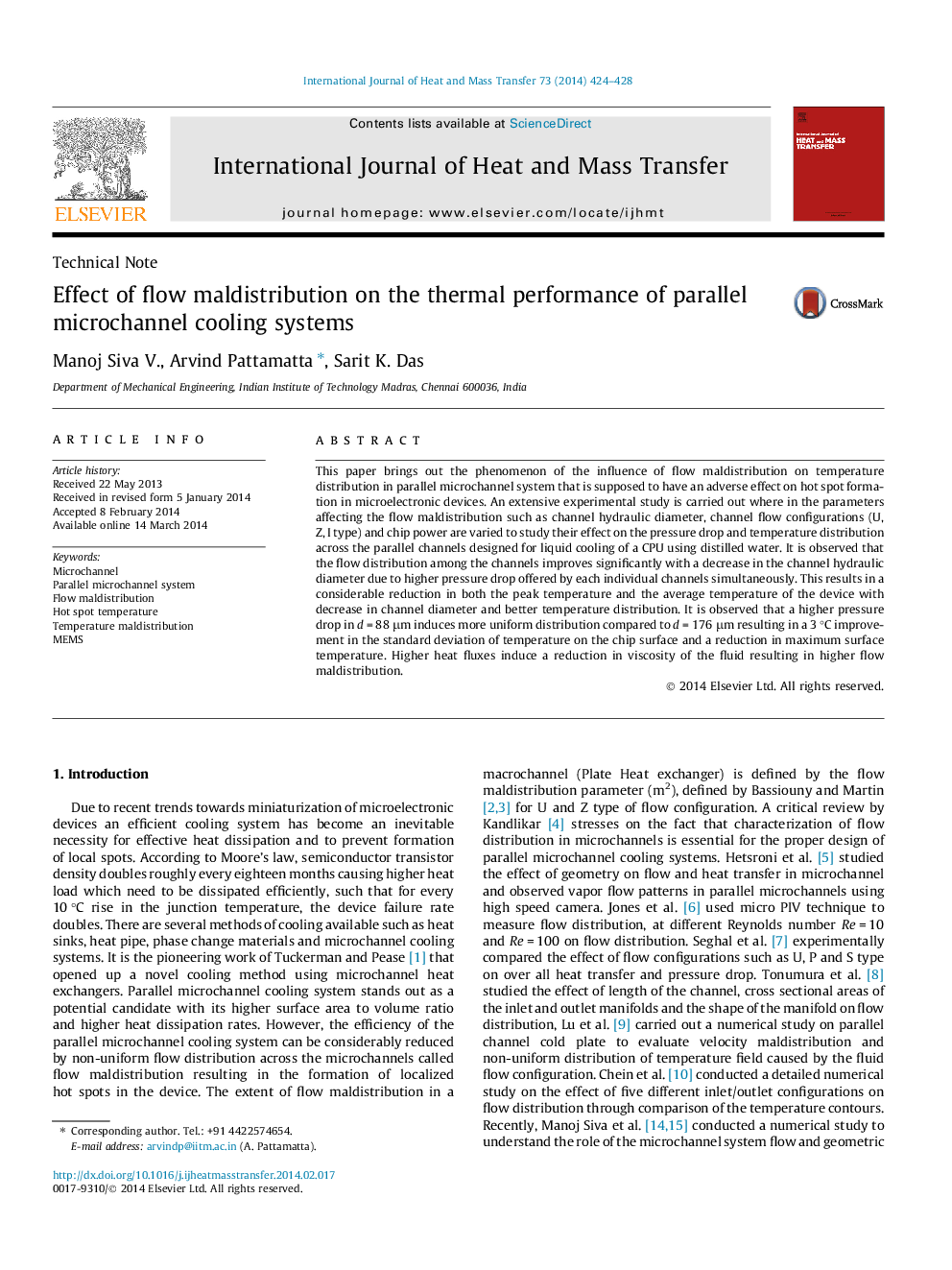| کد مقاله | کد نشریه | سال انتشار | مقاله انگلیسی | نسخه تمام متن |
|---|---|---|---|---|
| 657564 | 1458069 | 2014 | 5 صفحه PDF | دانلود رایگان |
This paper brings out the phenomenon of the influence of flow maldistribution on temperature distribution in parallel microchannel system that is supposed to have an adverse effect on hot spot formation in microelectronic devices. An extensive experimental study is carried out where in the parameters affecting the flow maldistribution such as channel hydraulic diameter, channel flow configurations (U, Z, I type) and chip power are varied to study their effect on the pressure drop and temperature distribution across the parallel channels designed for liquid cooling of a CPU using distilled water. It is observed that the flow distribution among the channels improves significantly with a decrease in the channel hydraulic diameter due to higher pressure drop offered by each individual channels simultaneously. This results in a considerable reduction in both the peak temperature and the average temperature of the device with decrease in channel diameter and better temperature distribution. It is observed that a higher pressure drop in d = 88 μm induces more uniform distribution compared to d = 176 μm resulting in a 3 °C improvement in the standard deviation of temperature on the chip surface and a reduction in maximum surface temperature. Higher heat fluxes induce a reduction in viscosity of the fluid resulting in higher flow maldistribution.
Journal: International Journal of Heat and Mass Transfer - Volume 73, June 2014, Pages 424–428
